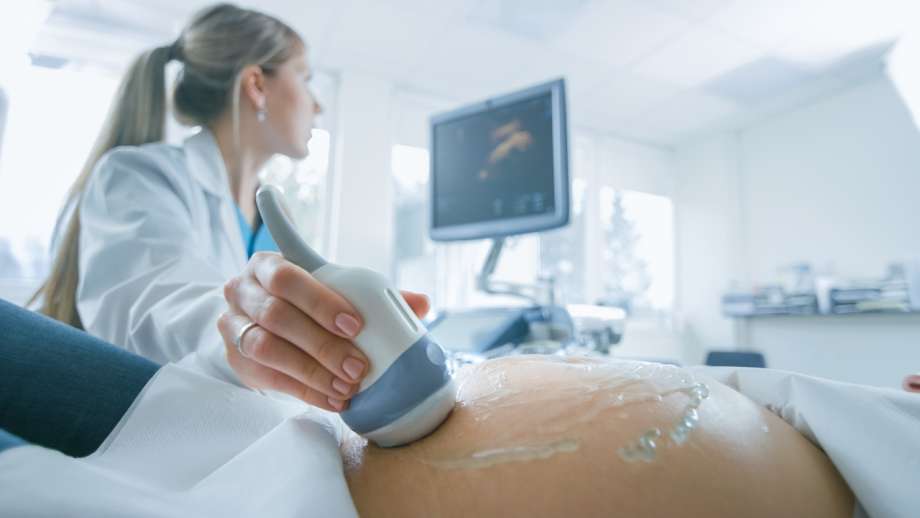The 5 Most Common Pregnancy Complications to Look Out For

Most people who are healthy when they get pregnant will remain healthy throughout the course of the pregnancy. However, some people who start their pregnancies low-risk will develop complications that can be dangerous.
These conditions are common experiences for many women during pregnancy and should be actively monitored with your doctor to detect and treat any potential risks.
Related: The Immune System and Pregnancy: A Step-by-Step Guide
-
High Blood Pressure (Hypertension)
According to the Centers for Disease Control (CDC), hypertension or high blood pressure is a common complication for pregnant women. Hypertensive disorders occur in about 1 in 12 pregnancies in the United States.
One of the biggest risks for developing a high blood pressure disorder in pregnancy is having elevated blood pressure (chronic hypertension) before you are pregnant. If you have chronic hypertension, it is important to talk to your healthcare provider about management and which types of medication are safe in pregnancy before you try to get pregnant.
For many people, uncomplicated hypertension does not have any symptoms. It is important to attend your prenatal visits as recommended by your healthcare provider because your blood pressure will be checked at each visit. Even for people without hypertension before pregnancy, high blood pressure may develop during the course of the pregnancy.
Sometimes the high blood pressure is accompanied by other concerning signs or symptoms, such as changes in liver or kidney function. Other times, high blood pressure is present by itself.
If you are diagnosed with hypertension during pregnancy, your healthcare provider will likely want to check bloodwork routinely and keep a closer eye on you and your baby with frequent appointments.
When hypertension develops during pregnancy, your care may be managed differently. In addition to extra labs and appointments, your healthcare provider may recommend medication to treat your high blood pressure and may recommend that you deliver your baby early via either induction of labor or cesarean section.
High blood pressure increases risks to pregnant people, including the risk of strokes and seizures. High blood pressure increases the risk to the baby as well because it can cause an increased chance of problems like stillbirth, low birth weight, or placental abruption. The baby is also at higher risk of preterm birth because sometimes the safest and best option is early delivery.
For many people, delivering the baby is key to helping their blood pressure return to normal. For some people, high blood pressure may continue even after the delivery of the baby. It is important to follow up closely with your healthcare provider, even after your baby is born.
-
Preeclampsia
If you develop high blood pressure along with changes in your kidney or liver function, you may be diagnosed with a condition called preeclampsia. Preeclampsia is less common than hypertension in pregnancy, but it still affects about 1 in 25 pregnant people.
The risk of developing preeclampsia is higher in people who have chronic hypertension, as well as people who are expecting their first baby, people who have underlying health conditions such as obesity, diabetes, or a clotting disorder, and in people who have conceived using in vitro fertilization (IVF).
Symptoms of preeclampsia can include a persistent headache, vision changes, pain in the upper part of the abdomen, and sudden onset of weight gain or unusual swelling, especially swelling that occurs in the face and the hands. If you have any of these symptoms, it is important to call your healthcare provider as soon as possible.
Preeclampsia can worsen quickly, so if you are diagnosed with preeclampsia, your healthcare provider will see you more frequently and keep close tabs on you and your baby.
Preeclampsia vs. Eclampsia
In some cases, preeclampsia can progress to an even more serious condition called eclampsia (previously called “toxemia”). When this occurs, the pregnant person has preeclampsia that worsens and causes seizures. Seizures in pregnancy can be dangerous, and when eclampsia occurs, it is important to deliver the baby as soon as possible to decrease risks to both the pregnant person and the baby.
Even after the delivery of the baby, there is a higher risk of developing preeclampsia in the postpartum period. If you have recently had a baby and have new symptoms of headaches, vision changes, pain in your upper belly, or new swelling, make sure to call your healthcare provider.
-
Gestational Diabetes

Gestational diabetes occurs when a pregnant person develops diabetes from the pregnancy. During pregnancy, hormonal changes cause insulin resistance, which makes diabetes more likely to occur. Because of this, most people who are pregnant are tested for diabetes between 24-28 weeks of pregnancy as part of their routine prenatal care.
Gestational diabetes occurs when the body is not able to make enough insulin to adapt to the normal insulin resistance of pregnancy.This test is typically administered by having the pregnant person drink a sugary drink, then drawing blood about an hour later to check and see how their body responded.
Gestational diabetes is common, occurring in anywhere from 2-10% of people who are pregnant in the U.S. When gestational diabetes is diagnosed, a management plan needs to be discussed with the pregnant person and the healthcare provider. Some people are able to manage their gestational diabetes by changing their diet and checking their blood sugars (blood glucose) carefully several times per day.
Other people take these measures but are not able to control their blood sugar. If this occurs, the healthcare provider will likely recommend starting a medication such as insulin to help control the blood sugar levels.
People who are able to manage their gestational diabetes with dietary changes may not have much of an increased risk of pregnancy problems when compared to people without gestational diabetes. However, your healthcare provider may err on the side of caution and recommend additional monitoring for you and your baby, as pregnancies affected by gestational diabetes have a higher risk of complications such as growth problems for the baby and stillbirth.
People who need insulin to manage their diabetes have a higher risk of several complications. These people typically have an earlier delivery, either through induction of labor or via cesarean section. While delivery of the baby “cures” gestational diabetes, people who have gestational diabetes have a higher chance of developing type II diabetes later in life.
If you have gestational diabetes, it is important that you continue to follow up with your healthcare provider after your baby is born, and undergo any additional testing that they recommend after pregnancy.
While induction of labor or cesarean section is typically recommended at some point for people who have gestational diabetes, it is unlikely that management of diabetes will require preterm delivery. Most people who have gestational diabetes will need to deliver during the last few weeks of pregnancy.
-
Preterm Labor
Preterm labor is defined as labor before 37 weeks of pregnancy. Preterm labor is common, affecting about 10% of pregnancies in the U.S. Preterm labor is concerning, because much of a baby’s growth and development occurs in the last few weeks of pregnancy.
Even being born a few weeks before the due date can increase the risk of a baby needing additional help at birth, or experiencing problems such as trouble breathing or eating.
Warning signs of preterm labor can include more than four uterine contractions per hour before 37 weeks of pregnancy, or an increase in pelvic pressure, watery vaginal discharge, vaginal bleeding, or abdominal cramping. If you experience any of these warning signs, call your healthcare provider to determine the next steps.
-
Anemia

As many as 1 in 5 pregnant people in the U.S. may develop anemia in pregnancy, which is a condition where there are not enough red blood cells to reliably transport oxygen to the body and the placenta. When this occurs, the pregnant person may feel tired, dizzy, or light-headed.
While anemia in pregnancy is not likely to be dangerous, it is important to manage anemia by increasing the amount of iron in your diet, taking a prenatal vitamin daily, and also taking an iron supplement if recommended by your healthcare provider.
This can help your body produce more red blood cells, and avoid some of the unpleasant symptoms that come along with anemia. Because anemia in pregnancy is so common, most people who are pregnant are tested for this condition several different times.
What pregnancy complications may cause a miscarriage?
While most of the complications discussed above are complications that occur in the second and third trimesters of pregnancy, one of the more common complications in the first trimester is miscarriage. Miscarriage is the loss of a pregnancy before 20 weeks of pregnancy.
As many as 1 in 5 pregnancies end in miscarriage, although the number is hard to track because sometimes miscarriage happens so early that the pregnant person is not aware of the pregnancy.
Most of the time a miscarriage is straightforward, commonly occurring because the baby has a genetic or congenital health problem, but miscarriage can be dangerous if it causes heavy bleeding or if the baby has implanted in the fallopian tube.
If the baby has implanted in the fallopian tube, this is called an ectopic pregnancy. Ectopic pregnancies need medicine or surgery to resolve, and without proper treatment can be extremely dangerous and even deadly forthe pregnant person.
If you have had a positive pregnancy test, then experience cramping, vaginal bleeding, or pain in one side of your lower belly, it is important to call your healthcare provider right away.While most healthy pregnancies proceed normally and without complications, having an awareness of some of the most common pregnancy complications can be helpful.
If you think that you are experiencing a pregnancy complication, make sure to discuss this with your OB-GYN or midwife. Careful management of pregnancy complications can ensure the best pregnancy outcome for you and your future baby.

